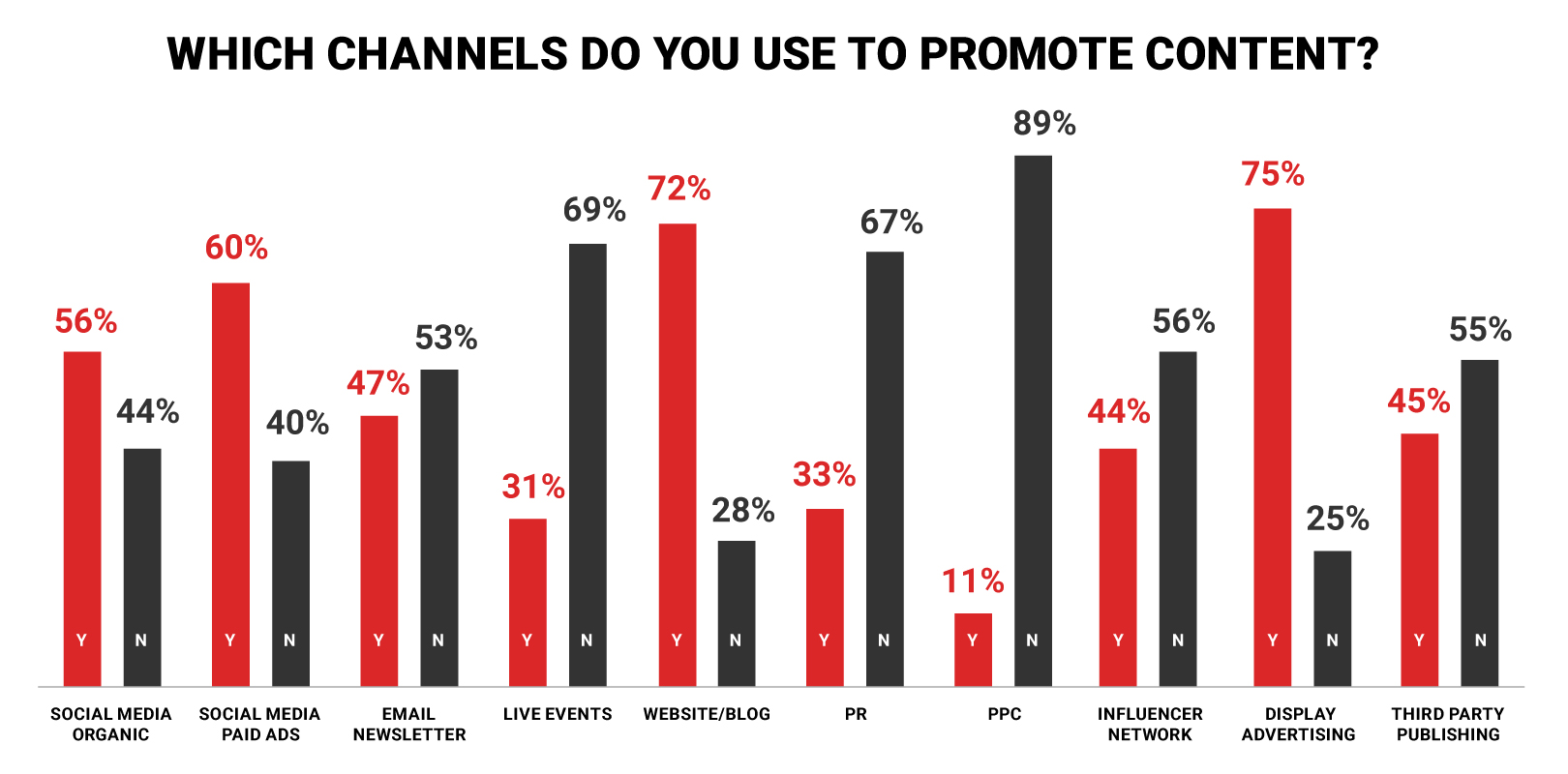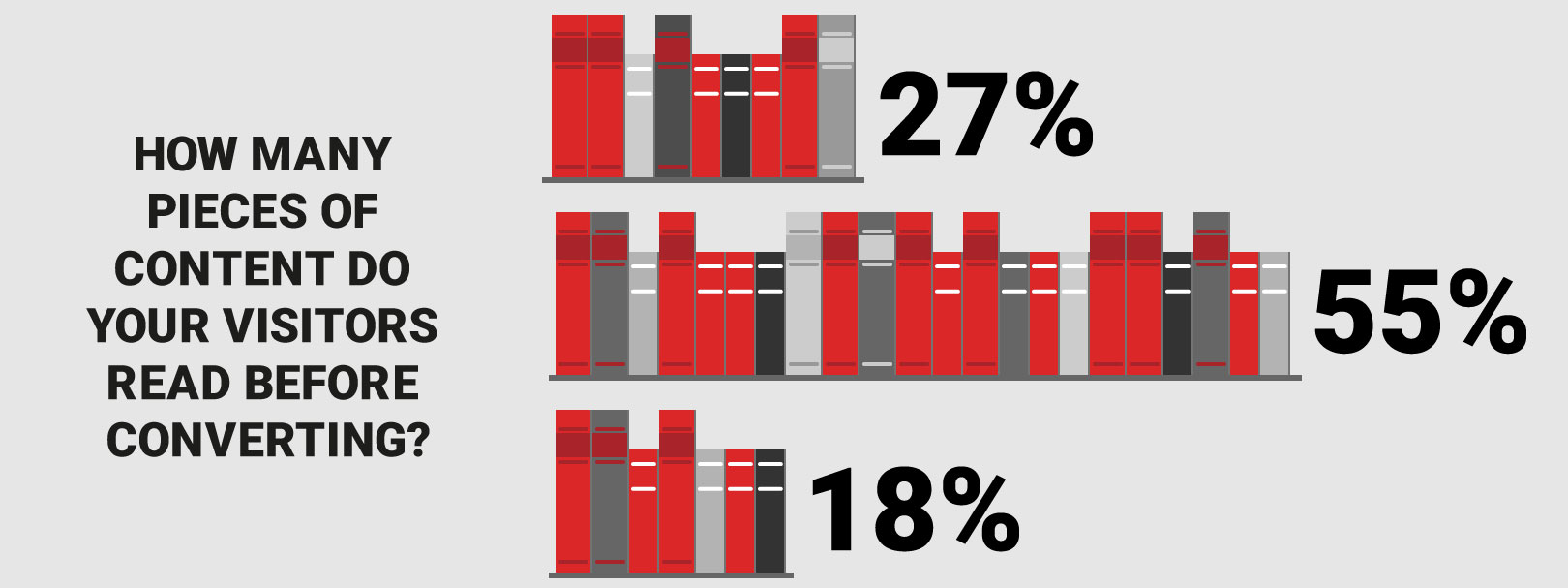Great inbound marketing relies on content that has the ability to captivate its audience and keep them coming back for more. Therefore, at the heart of every great inbound marketing strategy is a wide range of expertly crafted articles, blogs, videos and research papers. When done right, inbound marketing content creation can help businesses expand their audience, strengthen brand affinity, and ultimately drive leads and sales.
But often, marketers feel that their inbound marketing content isn’t working – not driving traffic, not engaging visitors and not generating qualified leads. We’ve explored seven potential reasons your inbound marketing content isn’t working optimally, and how you can improve it and achieve real results.
Reading time: 8 minutes
1. You’re not writing your content to target audience pain points
Before you begin the content creation process, it’s essential you write for your target audience pain points in order to be relatable and useful.
In order to do this, you firstly need to decide who your buyer personas are – if you haven’t already, that is. Make sure your personas are realistic by checking them against real data. Our B2B Inbound Marketing Report found that, 71% of marketers use CRM data, 63% consider stakeholders in the DMU and 59% review key opinion leaders to achieve this. You can read more about how to confirm your buyer personas here.
Then, you need to write your content solving the potential issues your buyer personas might have. Consider:
- What issues and problems do your prospects deal with?
- What obstacles stand in the way of them achieving their goals?
- What inconveniences make their jobs harder than they should be?
- In which areas are they lacking support from existing partners or suppliers?
Each persona will have their own pain points to deal with. While all employees within an organization have the company’s best interests at heart, they also experience more personal challenges. For instance, senior managers may have pressure from above and below, and will need to increase productivity to hit targets while keeping the team motivated. Or some department heads may struggle with getting board-level buy-in for the projects or technology they want to invest in.
By aligning your content strategy with the main pain points of your customers, you can answer their burning questions, solve problems or point them towards the right solutions (your solutions). Without considering pain points, you’re potentially not connecting with your target customer, or engaging an audience who likely would not buy from you – and they therefore do not convert.
2. You’re not creating content in a variety of formats or for different stages of the funnel
The focus with inbound marketing is to attract and engage, driving traffic through to your website, then continuing to nurture and connect with visitors. There is no ‘one single type of content’ that achieves this objective – in fact, different inbound marketing tactics require different types of content, which makes inbound marketing strategy planning crucial for successful inbound.
Inbound marketing content is commonly article blog posts, social media posts, videos, whitepapers and reports.
Short-form articles are essential for attracting more traffic and driving engagement across a wider audience, whilst videos have been proven to be the most engaging form of content on social media, generating the greatest number of impressions. Case studies, research reports and high-impact whitepapers are often more detailed and valuable, therefore playing a considerable role in driving interest and traffic to your site.
If you’re only creating one ‘type’ of content, you might be missing a fundamental piece from your inbound marketing puzzle. When creating content, it’s essential you consider the specific roles each type of content plays within your bigger inbound marketing strategy.
3. You’re not providing your valuable insights for free
This is the balancing act of demand generation and lead generation. Should you gate your content, or give value away for free?
Gated content is anything that requires handing over personal data. For instance, you may have a downloadable eBook on your website available for anyone to use – provided they give you an email address to send it to. This type of content is great for generating leads and feeding information through to the sales team to follow up on.
But early-funnel content is just as important. Leads only exist if you generate interest in the first place. Before asking your prospects to hand over details, make sure you have laid the foundations. If you have no previous content examples to show them, how will they know what they’re signing up for is going to be useful?
It can be tempting for marketers to focus too much effort on one or the other, relying on quick wins. However, free content is essential for your inbound marketing content strategy – and while you may save the most in-depth discussions and exclusive research data for your gated content pieces, you should never skimp on quality for your blogs and short articles. These will serve as a taster of what’s to come, so giving a few things away for free is essential.
4. You’re not utilizing the right inbound distribution channels for your content
As well as having the right type of content, you also need to utilize a broad range of distribution channels – and choose the right channels aligning with your target audience and content. It’s no use having ground-breaking articles if you put them in the wrong places. In our recent research, just under half of respondents (44%) aren’t using any organic social media – limiting their potential reach significantly.

As well as posting on your own blog and website, consider these 5 steps for extending your inbound marketing channels:
- Perform industry analysis
Conduct a comprehensive analysis to discover the best channels to use to promote your content. Look at competitors and big players in the industry – how do they attract people to their content? What are they doing to capture lead data? You also need to look at your existing customer data to analyze what channels they use frequently, and which ones they have used to engaged with you before.
- Set clear goals
Knowing what you are trying to achieve with each content piece is essential when it comes to placement. For traffic and engagement, you may want to use social channels to reach a wider group. For smaller segments, you may want to consider targeted emails.
- Consider where your target audience are most active
Demographic data such as age and job role can give you an indication of how tech-savvy they are, whether they are time-poor at work, which social sites they prefer, and where they are likely to spend their time online.
- Assess ROI
Before you decide on the right channels for your campaign, it can help to get an idea of the expected returns from each channel. For multi-channel campaigns, you can generate like-for-like data for your next project.
- Analyze and act
The more content campaigns you create, the more data you will gather. This is an important step when it comes to perfecting your strategy. Understanding which campaigns are the most successful, and which generate the most leads or sales, will help you decide on the right content and channels to use next time.
5. Your content is out of date – or it’s not topical enough
When it comes to content shelf life, it’s vital that you make content that lasts. This is what we call “evergreen content” – the type of content that stays relevant long after it’s been published. This could be an article on your website that continues to attract traffic and engage prospects a year down the line, generating interest in your company without you having to do anything.
However, this doesn’t mean that evergreen content is always best. Short-term content can be just as powerful, helping you build awareness and get more people to interact with your brand. This type of content is topical, and includes content such as social media posts or newsletters about current subjects of interest. The use of topical content places your business in the here and now, giving you relevance at a time that counts.
Creating new content, whilst also evolving, refreshing and re-purposing older pieces, is a key content tactic all marketers should already be actioning. Content optimization is key.
6. You’re simply not making enough content
Producing content is no easy feat – ‘writers block’ is a term that has been around since the mid-1900s. And with a huge content explosion taking over the internet, it’s tricky to find topics that you can write about, that have not already been covered by somebody else. Writing the same piece of content as everybody else could almost be off-putting and discredit your organization for not being ahead of the curve.
This doesn’t mean that you shouldn’t be making enough content. Most marketers find that it takes 3-5 pieces of content to convert a visitor – and 44% of businesses create 5-9 pieces per month for their inbound marketing strategy. Simply put, you might not be making enough content to convince your audience and keep them engaged.

7. You’re not optimizing your content or website
76% of marketers ensure to use social media within their inbound marketing strategies, only 58% use search engine optimization, highlighting that SEO is often an area that is overlooked in comparison to other techniques. However, well-written content or beautifully designed landing pages are pointless if no-one can find them; that’s why SEO should be a key part of any inbound marketing content strategy.
If you are posting regularly on your company blog, it’s good to focus on a search team to make your content visible. Extensive keyword research should be done before tackling any content campaign, and working with talented SEO writers is important if you want to balance optimization and content quality.
Any experienced search specialist will tell you that the first and most important audience is the reader. The second is search engines. This means that your article, blog or paper needs to be perfectly crafted for human eyes. Any key phrases must be woven in naturally and should never compromise readability.
Additionally, your website needs to be optimized if you want to attract more people to discover your brand. Landing pages must be well-written, free from pop-ups and banners, have easy navigation, and provide information to the user. It’s also worth linking to any relevant content pieces from high-traffic landing pages to drive interest.









